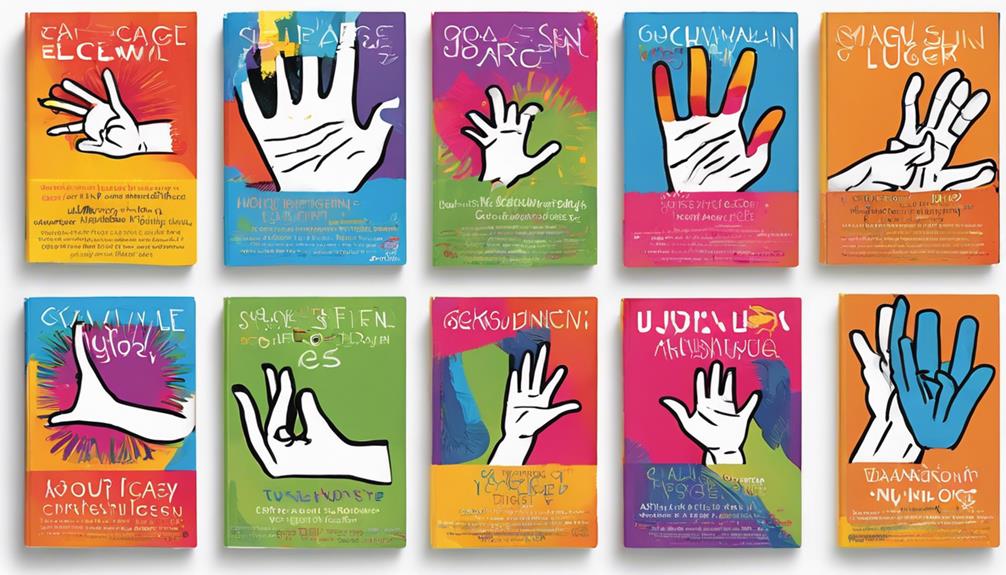Around the world, sign language policies are evolving, with many nations recognizing its importance by 2025. Legal recognition fosters inclusive education, accessible services, and societal acceptance, empowering deaf communities. Countries with such policies see better educational outcomes and stronger cultural appreciation. However, some nations still lack holistic laws, limiting access to resources and interpreters. If you’re curious about how these policies are shaping deaf rights globally, there’s more to explore below.
Key Takeaways
- An increasing number of countries are legally recognizing sign languages by 2025, promoting inclusive education and societal acceptance.
- Legal recognition of sign language enhances access to qualified interpreters, accessible materials, and inclusive curricula worldwide.
- Countries without formal policies face limited resources, marginalized sign language, and lower educational outcomes for deaf students.
- Recognition fosters cultural identity, societal acceptance, and empowerment of deaf communities across diverse regions.
- Continued advocacy aims to expand sign language policies, ensuring accessibility, inclusion, and rights for deaf populations globally.

Sign language policies vary widely across the globe, shaping how deaf communities access education, healthcare, and public services. These policies directly influence the level of educational inclusion offered to deaf students and determine whether sign language is legally recognized as an official language. In some countries, governments have made significant strides by enacting laws that promote the use of sign language in classrooms, ensuring that deaf children aren’t left behind in traditional educational systems. Legal recognition of sign language often serves as a foundation for these efforts, affirming its status as a legitimate language with cultural and linguistic value. When sign language is legally recognized, it becomes easier to implement inclusive curricula, train teachers in sign language, and provide accessible learning materials. This legal backing also encourages the development of specialized programs that support deaf students’ academic growth, fostering an environment where they can thrive alongside their hearing peers. Additionally, high-quality sign language interpretation services are essential for effective communication and full participation in various settings.
However, not all nations have embraced these principles fully. Many still lack extensive policies that support educational inclusion for deaf learners, resulting in limited access to qualified sign language interpreters or resources. Without legal recognition, sign language may be marginalized or regarded as an auxiliary tool rather than a fundamental component of education. This often leads to segregated schooling environments or reliance on oral methods that don’t respect the linguistic rights of deaf students. When policies neglect to recognize sign language, deaf children might face exclusion, lower academic achievement, and diminished opportunities for social integration. Conversely, countries with clear legal recognition tend to see better educational outcomes, increased awareness, and greater societal acceptance of deaf culture.
If you’re advocating for change, understanding the importance of legal recognition is essential. It’s not just about having a law on paper but about embedding sign language into the fabric of educational and public systems. This recognition empowers deaf communities, affirms their linguistic identity, and guarantees that sign language remains accessible and respected across all facets of society. As 2025 approaches, the global landscape continues to evolve, with more nations recognizing sign language officially and working toward more inclusive education systems. Your role, whether as an advocate, educator, or policymaker, is indispensable in pushing for policies that prioritize educational inclusion and uphold the legal recognition of sign language, ensuring that deaf individuals are given the same opportunities to learn, communicate, and participate fully in society.
Frequently Asked Questions
How Do Countries Differ in Recognizing Sign Languages Officially?
You’ll notice that countries differ greatly in their approach to recognizing sign languages officially. Some grant legal recognition, ensuring rights and resources, while others have policy disparities, leaving sign language less supported. These differences impact access to education, healthcare, and employment for deaf communities. Your understanding of these variations highlights the importance of legal recognition in promoting equality and inclusion for sign language users worldwide.
What Challenges Do Deaf Communities Face Globally?
Imagine trying to navigate a maze with fog obscuring your path—that’s what deaf communities face worldwide. You encounter hurdles like cultural perceptions that overlook sign language’s importance and limited accessibility infrastructure that blocks connections. These challenges create barriers to education, employment, and social inclusion, leaving many feeling isolated. Addressing these issues requires changing mindsets and building better systems so everyone can find their way clearly and confidently.
Are There International Standards for Sign Language Education?
You might wonder if international standards for sign language education exist. Currently, there’s no unified global standard, which challenges the recognition of linguistic diversity and consistent policy implementation. Different countries develop their own approaches, often influenced by cultural and political factors. This lack of standardization can hinder worldwide collaboration, but efforts are ongoing to promote more inclusive policies that respect linguistic diversity and improve sign language education worldwide.
How Is Technology Influencing Sign Language Policy Development?
Technology transforms sign language policies by turbocharging digital accessibility, making communication clearer and more convenient. You see, digital tools help bridge linguistic diversity, ensuring everyone’s voice is heard. As tech evolves, policymakers can craft more inclusive, innovative initiatives that foster greater understanding and equality. You’re empowered by these advancements to promote policies that prioritize accessible, adaptable, and diverse sign language education, shaping a more connected, compassionate world for all.
What Role Do Advocacy Groups Play in Shaping Policies?
You see that advocacy groups play a vital role in shaping sign language policies. Their advocacy impact raises awareness, pushes for inclusive legislation, and guarantees deaf communities’ needs are prioritized. By mobilizing supporters and engaging with policymakers, they influence policy influence and drive positive change. Your support for these groups amplifies their voice, helping to create more accessible, equitable environments for sign language users worldwide.
Conclusion
As you’ve seen, sign language policies around the world are like a patchwork quilt—diverse, vibrant, and full of potential. While progress lights the way, many regions still navigate the shadows of neglect. Your voice can be the catalyst that weaves these patches into a unified tapestry of inclusion. Together, we can turn the page toward a future where every hand speaks, and every voice is heard, painting a world where deafness is celebrated, not silenced.











